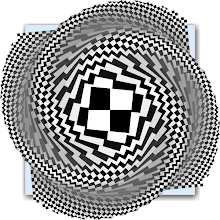Pendragon
From Wikipedia, the free encyclopedia
For other uses, see Pendragon (disambiguation).
Pendragon or Pen Draig, meaning "head dragon" or "chief dragon" (a figurative title referring to status as a leader), is the name of several traditional Kings of the Britons:
- Ambrosius Aurelianus, son of Constantine II of Britain, called "Pendragon" in the Vulgate Cycle
- Uther, brother of Aurelius and father of King Arthur, is called Uther Pendragon because he was inspired by a dragon-shaped comet (In the Vulgate, he took the name from his brother)
- King Arthur, son of Uther
- Maelgwn of Gwynedd, described by Gildas as the "dragon of the island"
In the Historia Regum Britanniae, one of the earliest texts of the Arthurian legend, only Uther is given the surname "Pendragon", which is explained as meaning "dragon's head". In the prose version of Robert de Boron's Merlin, the name of Uther's elder brother Ambrosius is given as "Pendragon", while Uter (Uther) changes his name after his brother's death to "Uterpendragon".
The use of "Pendragon" to refer to Arthur, rather than to Uther or his brother, is of much more recent vintage. In literature, one of its earliest uses to refer to Arthur is in Alfred Tennyson's poem Lancelot and Elaine, where, however, it appears as a title of Arthur rather than as a surname, following contemporary speculation that "pendragon" had been a term for an ancient British war-chief.
The term "Pen Dragon" also is a Fennian (Ephraimite) form meaning, Pen "child(ren) of" Ap "Son of" combined with "Dargon" or "Dragon" the symbol of the Tuatha de Dannon (Danites) who were warriors that married the Irish widows, hence the Gaullo term Welch (Ue Lach) or "woman of a warrior."
http://www.chinatravelz.com/insight/things-insight/antique/robe/index.asp
| Dragon Robe (Longpao) |
A dragon robe is either yellow or apricot-yellow in colour, and embroidered with nine yellow drag-ons and five-hued auspicious cloud patterns. The clouds are interlaced with twelve other patterns?the sun, the moon and stars (representing the light of the throne), mountains (synonymous to stability), dragon (symbolizing adaptability to changes) auspicious bird (denoting elegance and beauty) water reeds (which represent pu-rity and cleanness), and fire (meaning light).
According to imperial Qing rituals, the emperor's dragon robe was a kind of auspicious attire for lower-grade celebrations and ceremonies-it was by no means the highest grade of imperial attire.
The dragon robe that was passed down from one emperor to another is embroidered with a dragon on the front and the back, before or behind the knees, on the shoulders, and on the lining of the chest. Thus a total of nine dragons are embroidered on a dragon robe.
Observed from the front or behind it, five dragons could be seen at a glance, because in Chinese tradition the figures nine and five tallied with the dignity of the throne.

No comments:
Post a Comment